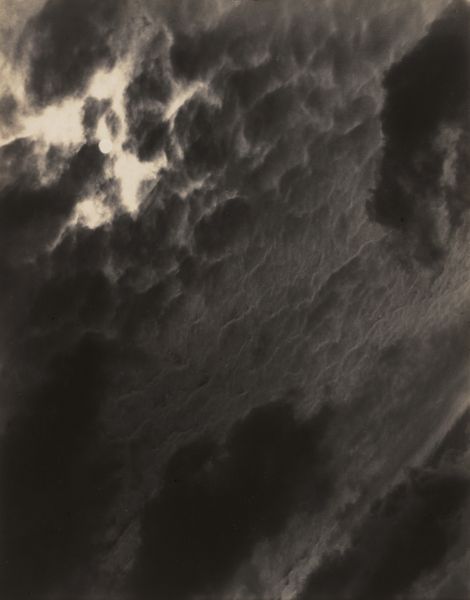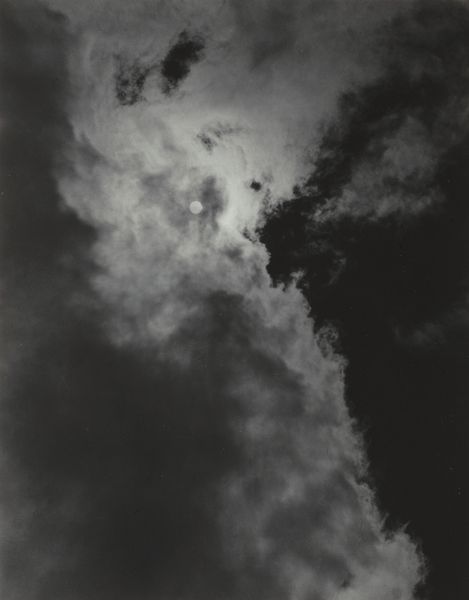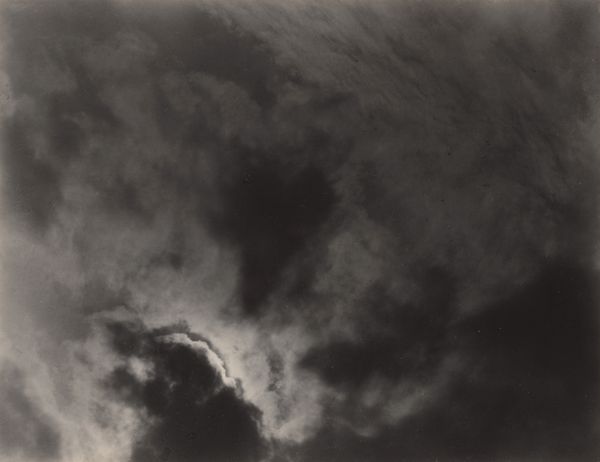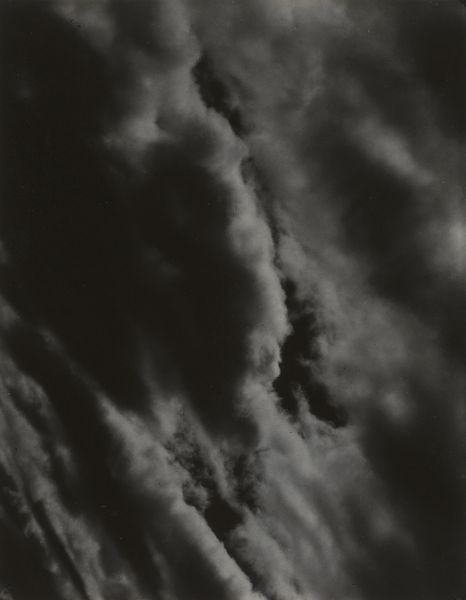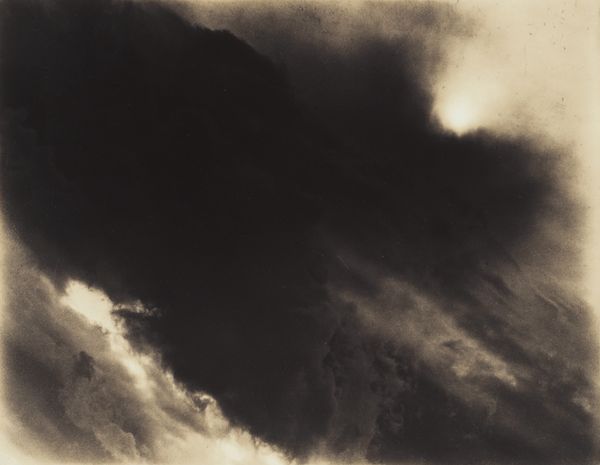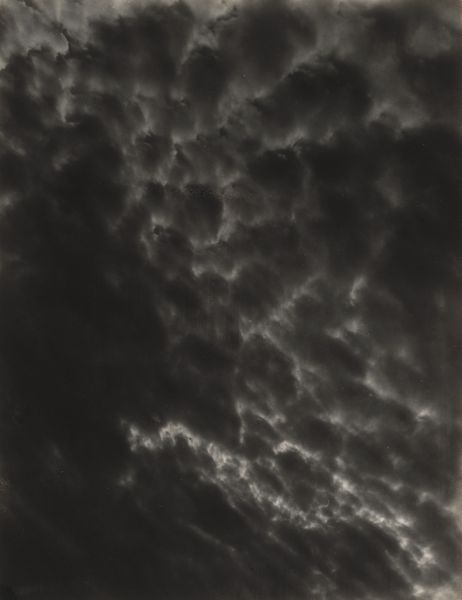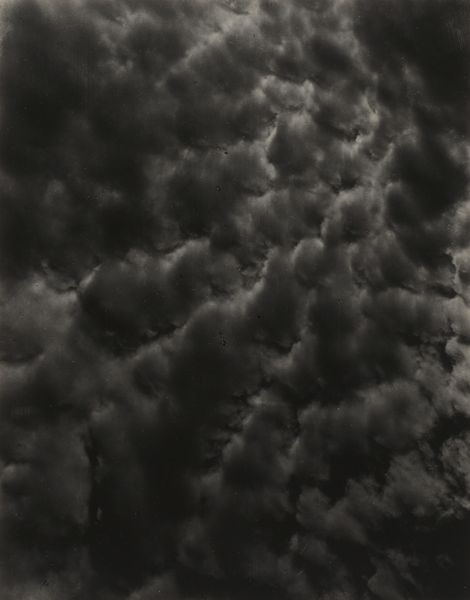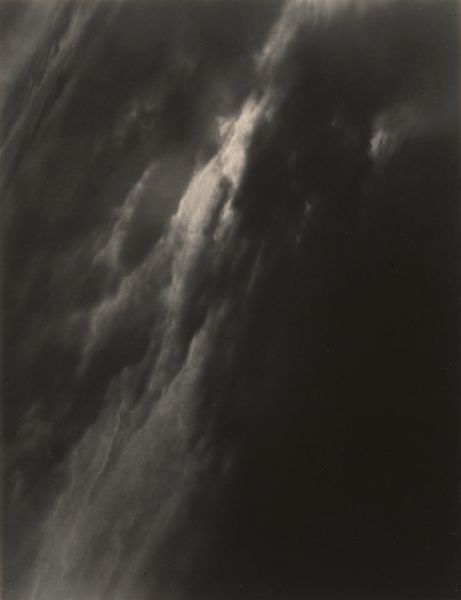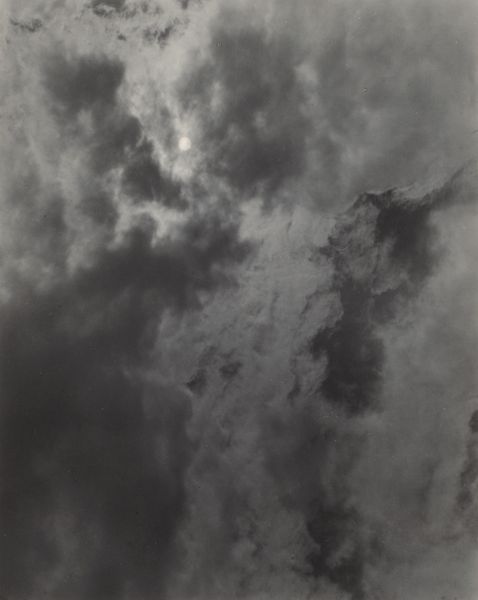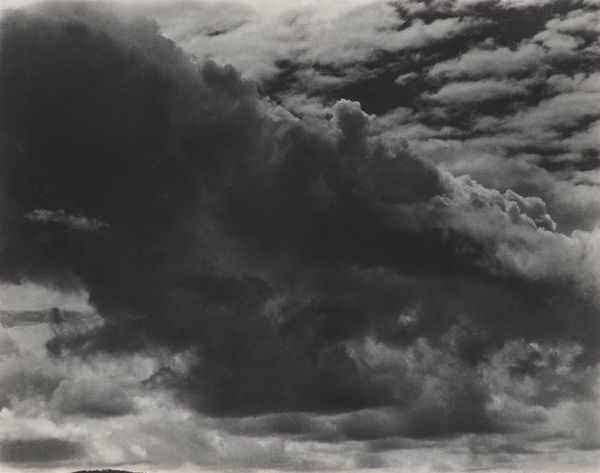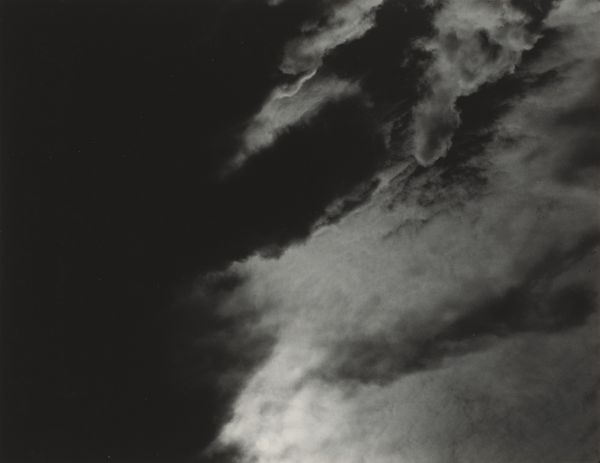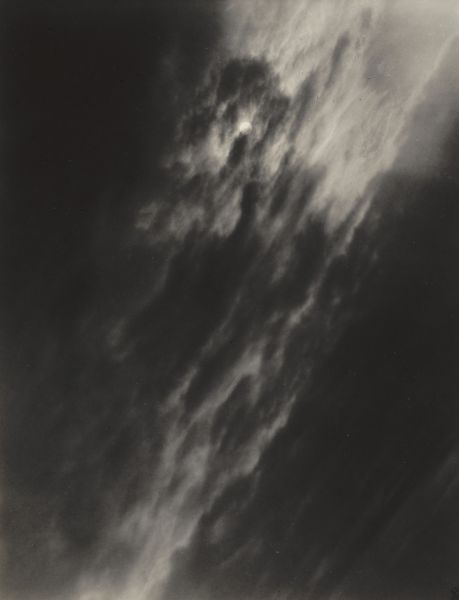
#
cloudy
#
natural shape and form
#
natural formation
#
snowscape
#
dirty atmosphere
#
gloomy
#
fog
#
murky
#
mist
#
shadow overcast
Dimensions: sheet (trimmed to image): 11.8 x 9.2 cm (4 5/8 x 3 5/8 in.) mount: 34.7 x 27.5 cm (13 11/16 x 10 13/16 in.)
Copyright: National Gallery of Art: CC0 1.0
Curator: This black and white photograph evokes a very particular mood, doesn’t it? There’s a powerful diagonal sweep across the frame, but it feels melancholic somehow. Editor: Indeed. We’re looking at Alfred Stieglitz’s photograph, titled “Equivalent,” created in 1929. Stieglitz intended this series, his "equivalents," to reflect his inner emotional states. He believed that clouds could express the same emotional and spiritual intensity as any human subject. Curator: I can certainly see that in the arrangement of shapes. The high contrast renders the image dramatic. Those dense, rolling forms meeting the subtle wisps higher up; it’s more than just cloud formations. It’s about contrasts, it's a semiotic opposition almost. Editor: Precisely. The social context is fascinating here. Stieglitz, having championed modern art, wanted to show photography's capability to express the inexpressible. He rejected the idea that photographs needed recognizable subject matter and declared these images as independent from objective reality, as symbolic of an interior reality, reflecting the spiritual crisis brought on by industrialization. Curator: So the subject matter becomes secondary; it is rather about the aesthetic experience. He achieves this partly through the limited tonal range. Those gradations from the nearly pure white at the upper left corner all the way down into near total darkness. It’s masterful tonal manipulation. Editor: And it's also important to consider that at this time there was much discussion on how photographic depictions could ever be "art", especially alongside traditional paintings. Steiglitz here is showing how the photographer's subjective vision—or the choices of where to point the camera, of what angle or distance to compose at, are a path to that artistic value. Curator: Ultimately, the photograph invites you to project. Whether or not it expresses the artist's personal turmoil, the strength of that high contrast encourages you to engage on a subjective level and discover your own "equivalent." Editor: It is that capacity of the photograph to mean so many things while portraying one concrete image, isn't it? Thank you. It really highlights how social changes often push and direct where art goes, I think.
Comments
No comments
Be the first to comment and join the conversation on the ultimate creative platform.
